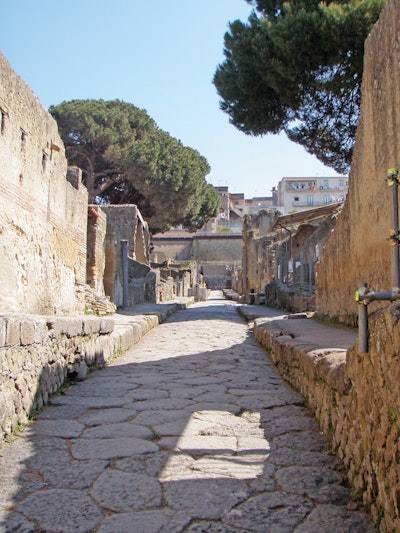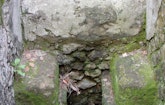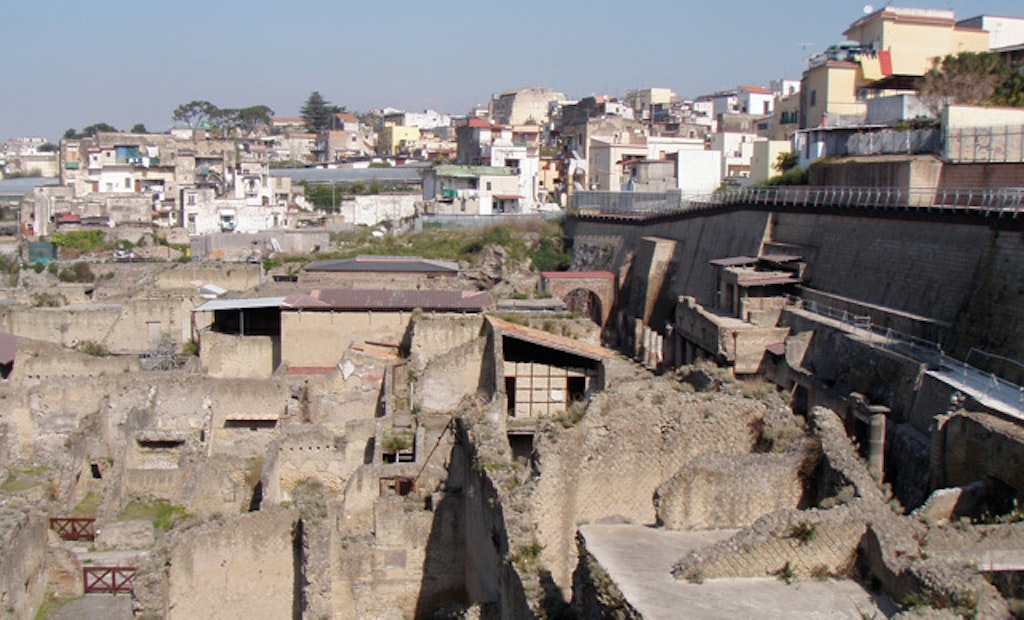Interested in Rehab/Relining?
Get Rehab/Relining articles, news and videos right in your inbox! Sign up now.
Rehab/Relining + Get AlertsIn A.D. 79, Mount Vesuvius buried the Roman town of Herculaneum, and its sewer system, under 60 feet of debris. After a farmer rediscovered the ancient town 1,600 years later, archaeologists had their hands full studying mosaics, paintings and water features.
Recently they’ve turned their attention to the sewers. Their studies have brought insights into how Romans handled wastewater and stormwater, how they built, how they lived, and even what they ate.
Elaborate systems
Herculaneum lies five miles from modern Naples in the south of Italy. Two thousand years ago, it was a seaside town of 4,000 with elaborate wastewater and stormwater systems. Households collected rainwater to store in cisterns, disposing of what was left over both on the sloping streets and in the sewers below them.
Rainwater was not residents’ only concern: They also had to dispose of wastewater from the public bath complex, the town pool, and public and private restrooms.
We might not know much about the sewers of Herculaneum if archaeologists hadn’t been forced to rethink the way rainfall drains from the site. When the city was occupied 2,000 years ago, rainwater had somewhere to go: the city’s system sloughed it off. When archaeologists excavated the site, though, they opened up the fragile houses, with all their paintings and mosaics, but didn’t open up the sewers that had formerly drained water from them.
An archaeological near-disaster ensued. Unmanaged rainwater caused dampness and mold, which began to destroy the ancient treasures. As a solution, the Herculaneum Conservation Project decided to open up the old sewers for modern use. In the process, archaeologists have learned about how Herculaneum’s ancient population dealt with stormwater and wastewater.
Exploring the workings
It’s hard to say exactly how the system worked — archaeologists are constantly learning more — but here is an outline.
Many residents of Herculaneum had private toilets. To flush a toilet, they would pour water down sloping tiles that led toward a hole, cleaning the toilet surface while moving the waste along. If they were lucky enough to have a toilet in the upstairs, they needed very little water, because the waste would make a vertical drop down a terra cotta pipe.
After the waste left the house, it flowed toward a sewer under the sidewalk or street. The sewer carrying that toilet waste could be as large as 6 feet wide and 12 feet tall. The sewers had relatively straight walls and vaulted ceilings built from volcanic tuff. The floors were made of cement. At the junctions between sewers, corners were rounded to improve the flow of water and reduce its pressure.
Depending on where people lived, the toilet waste might mingle with stormwater and bathwater before plummeting down a shaft to flow toward the sea. Or it might flow into a giant septic tank that had to be emptied every so often. Archaeologists think the contents of this tank might have been used to fertilize surrounding fields.
What we can learn
Besides creative design, what do the ancient sewers teach us? We learn about daily life from the objects residents dropped into the sewers — everything from coins to pots. The sewers also demonstrate Roman building techniques: In some, it’s still possible to see impressions of the wooden forms used to build the vaulted ceilings.
And, of course, ancient feces have revealed details about diet and health. Archaeologists think residents of ancient Herculaneum ate (among other things) figs, fish, eggs, bread, chicken and olives.
Panoramic photos of the sewers can be seen at www.proxima-veritati.auckland.ac.nz/Herculan eum/Sistema_fognario/index.html.
The Herculaneum Conservation Project (www.herculaneum.org/hcp-home/#) is the group responsible for most of the sewer work. Supervising archaeologist Domenico Camardo has worked extensively with the sewers.








